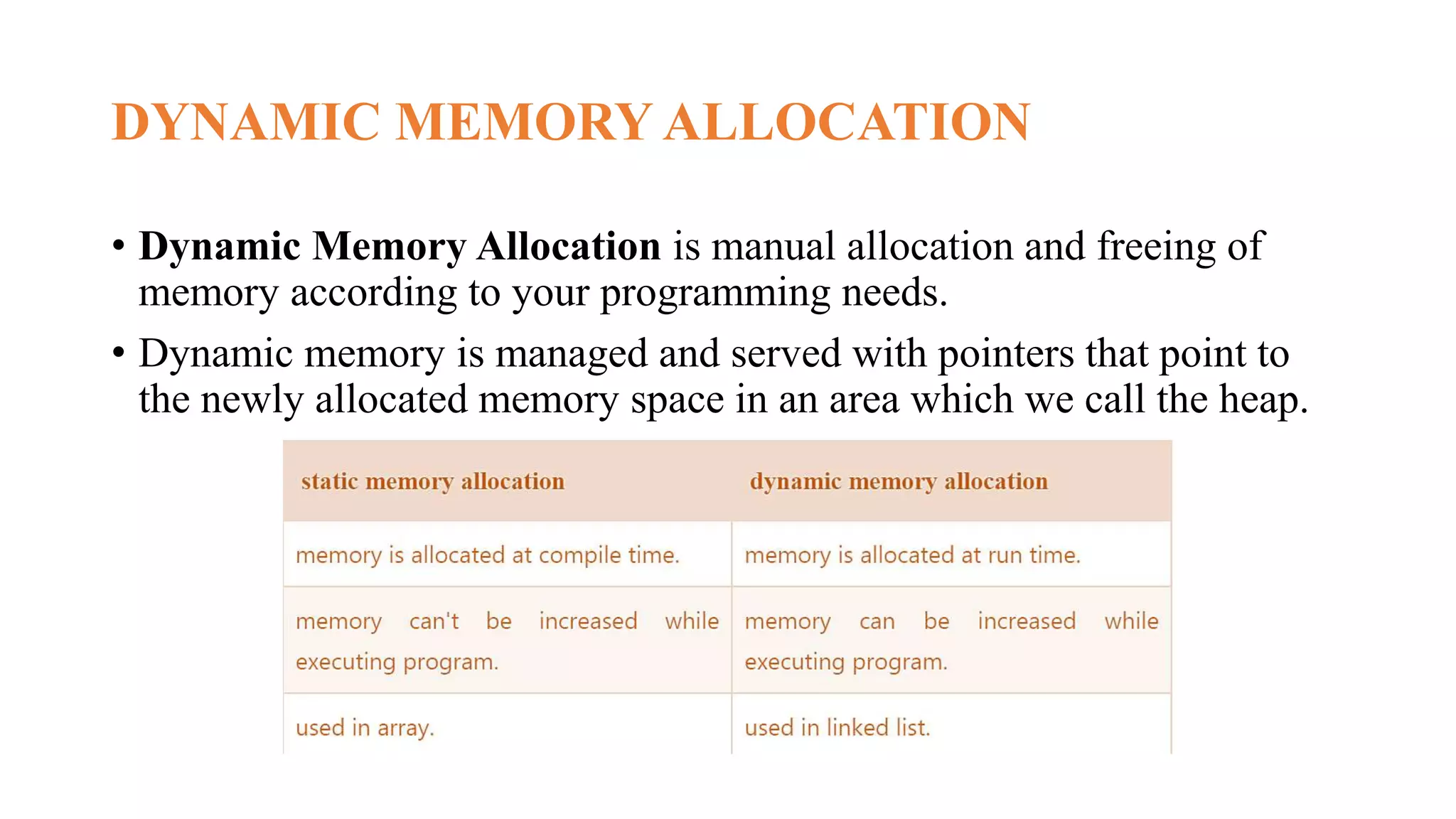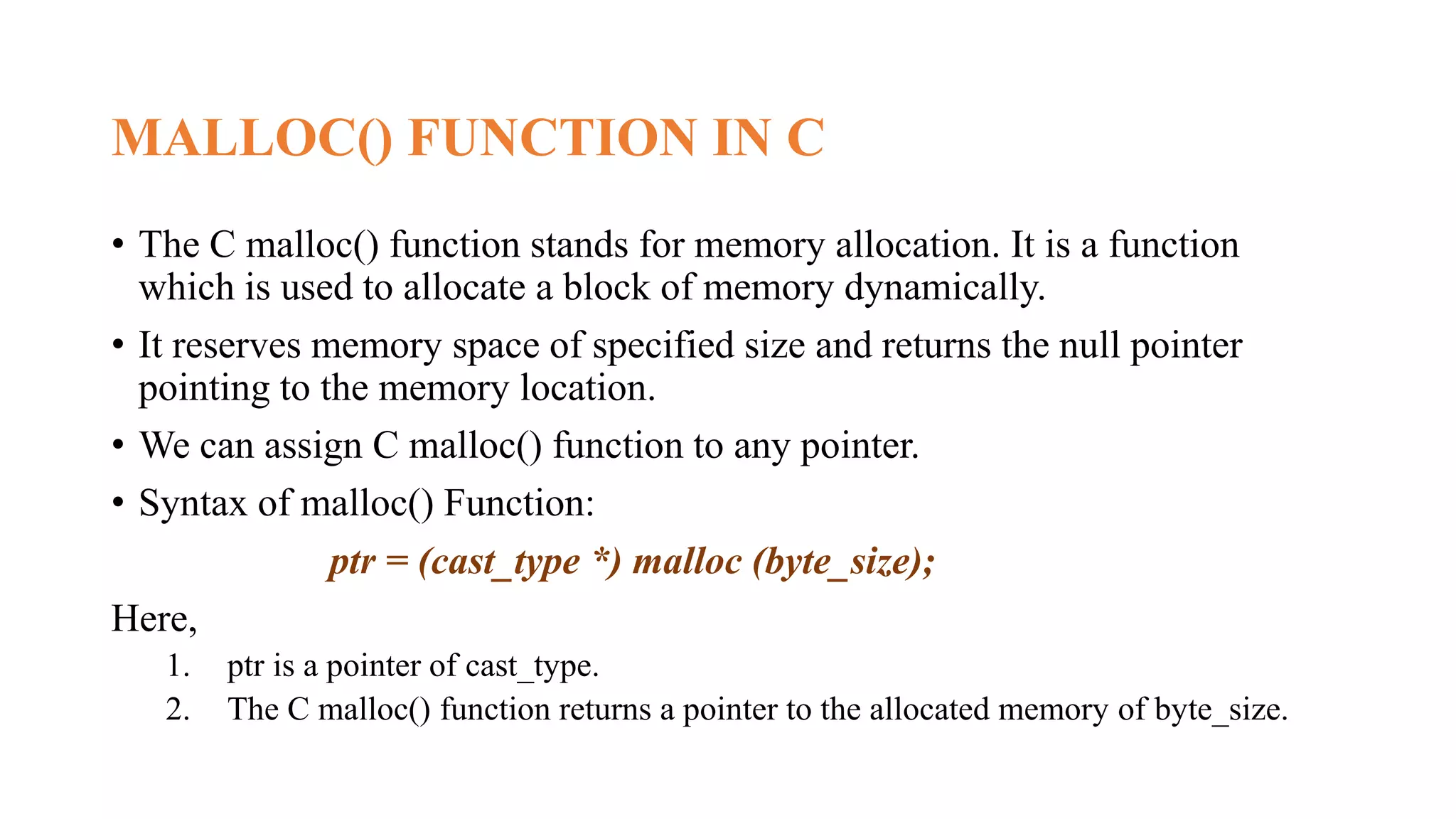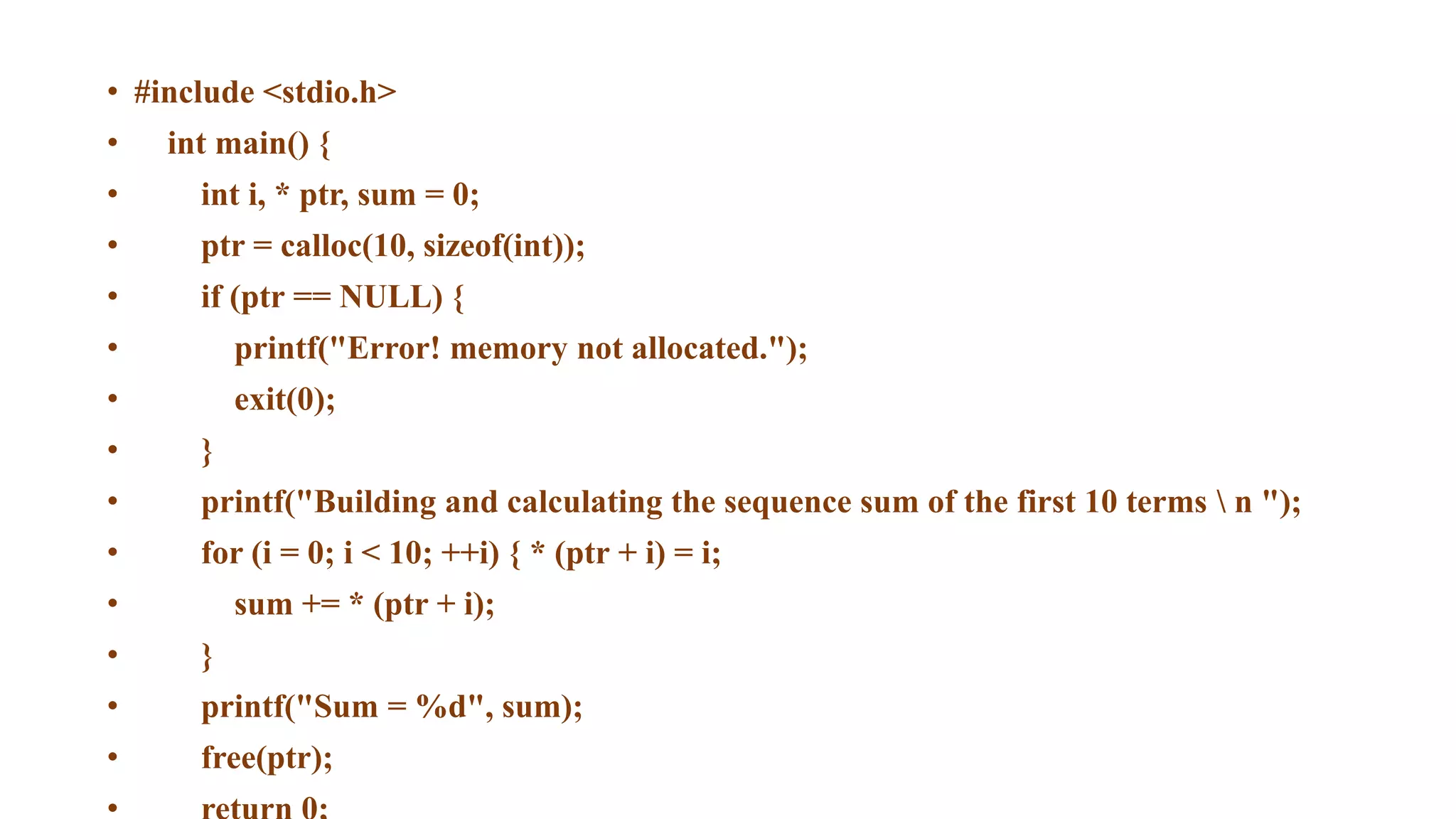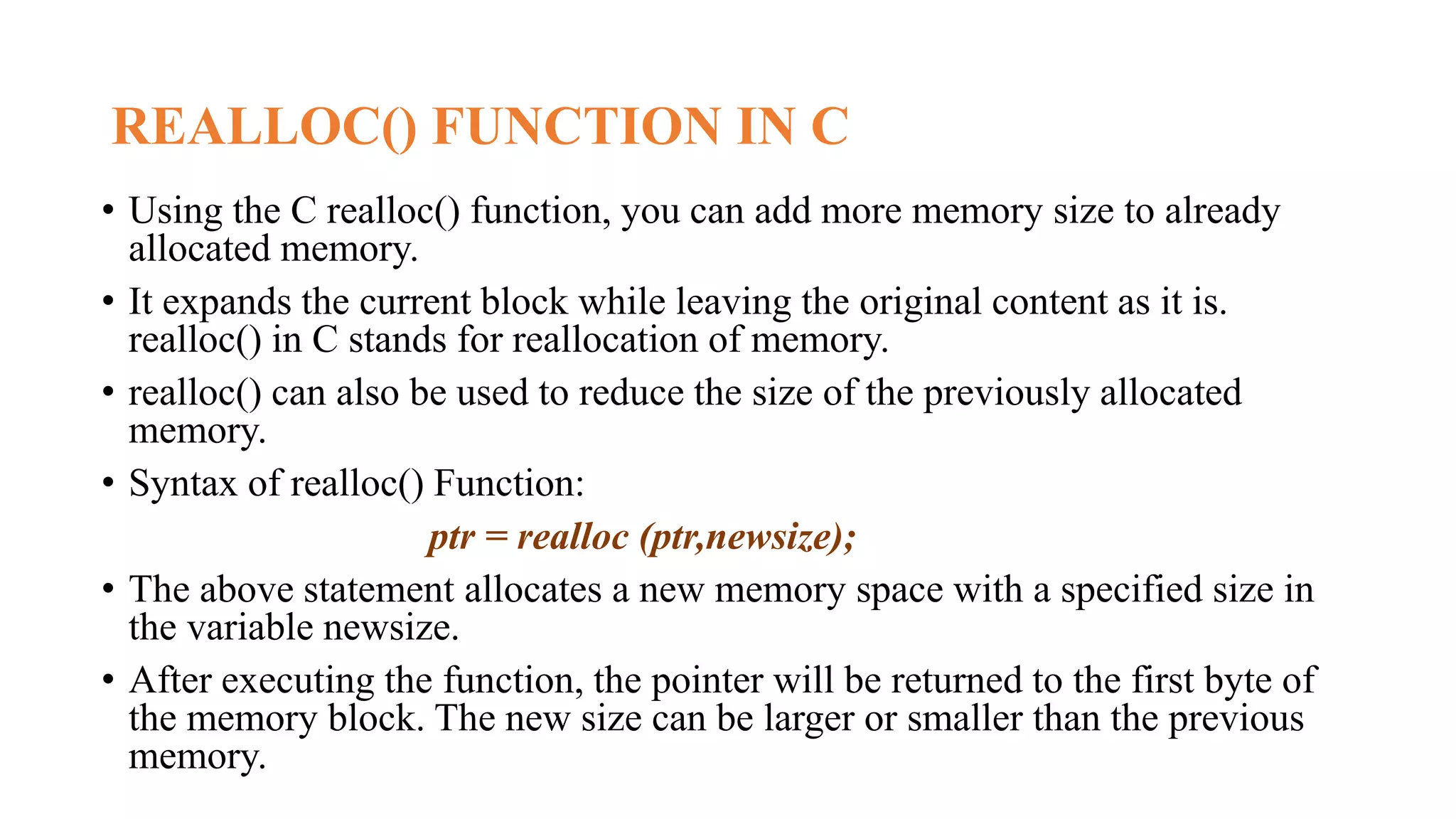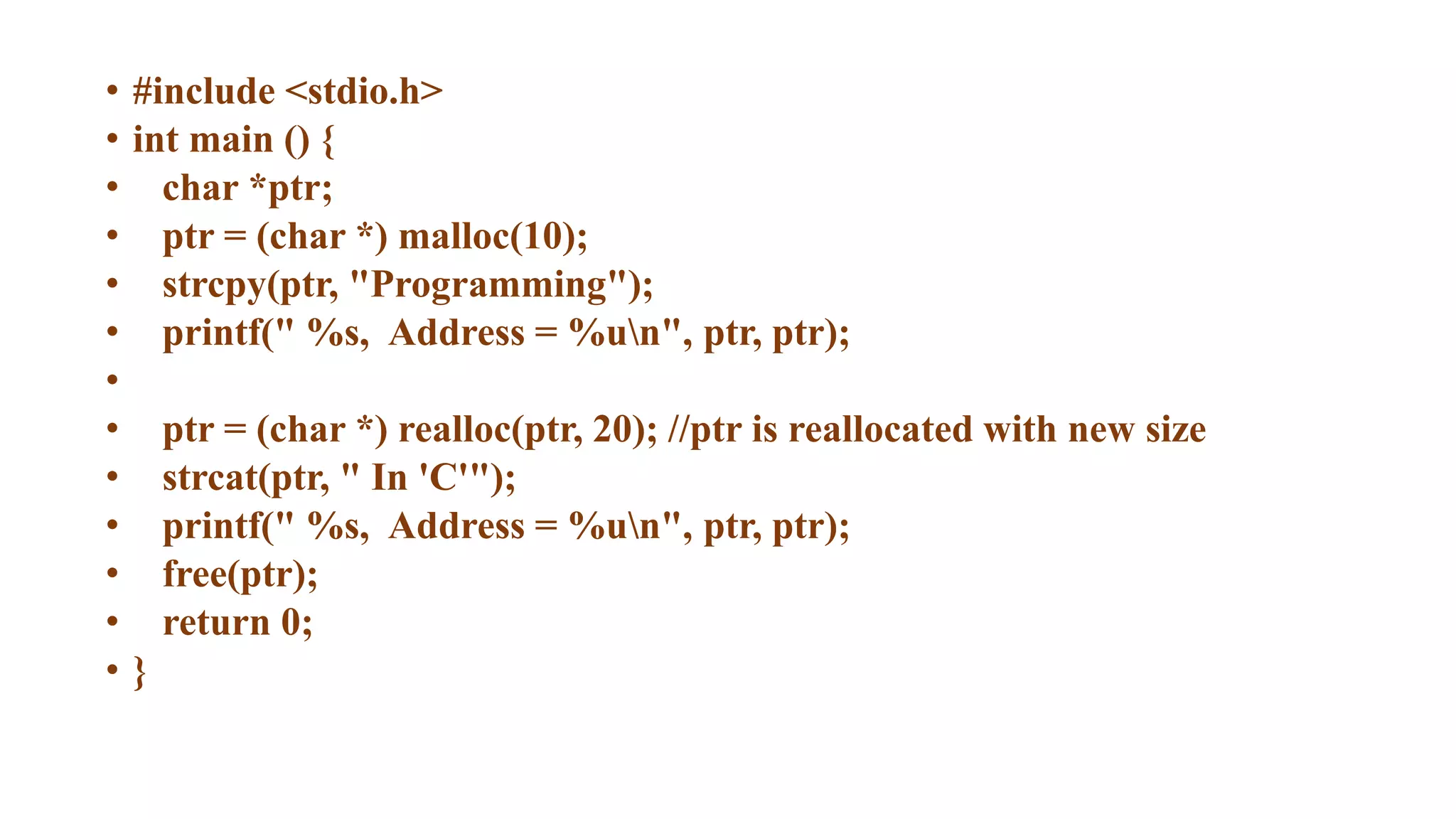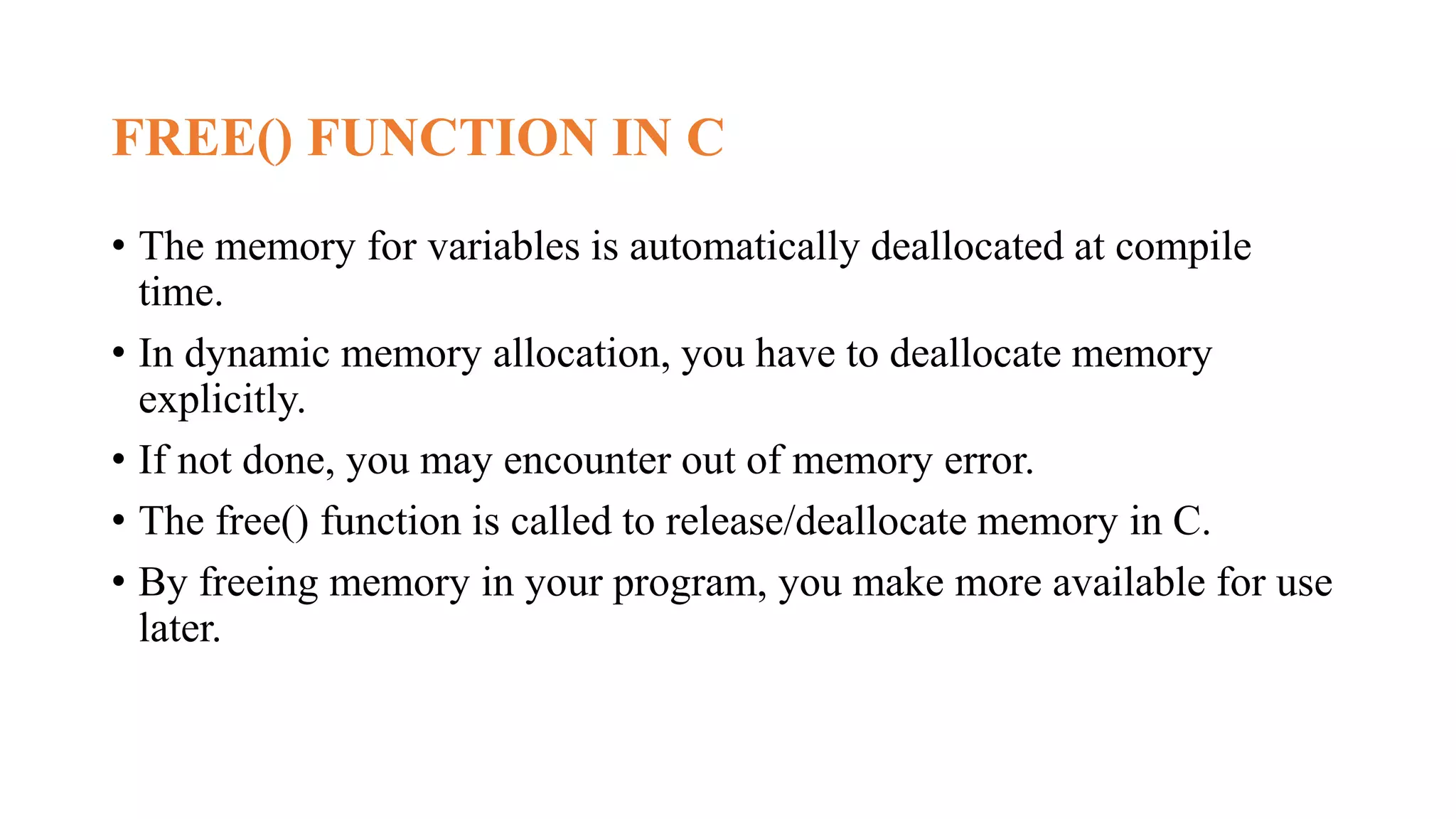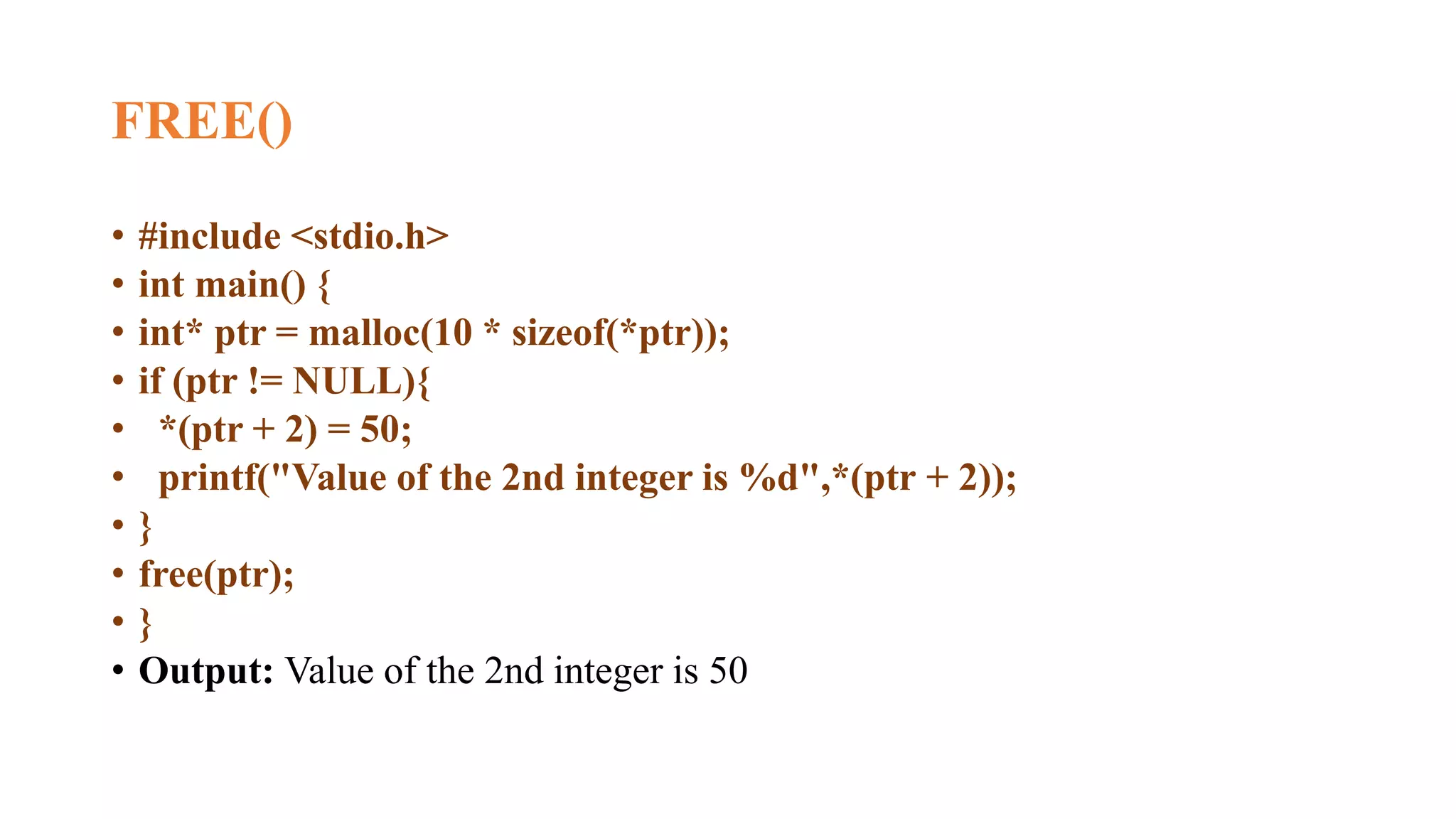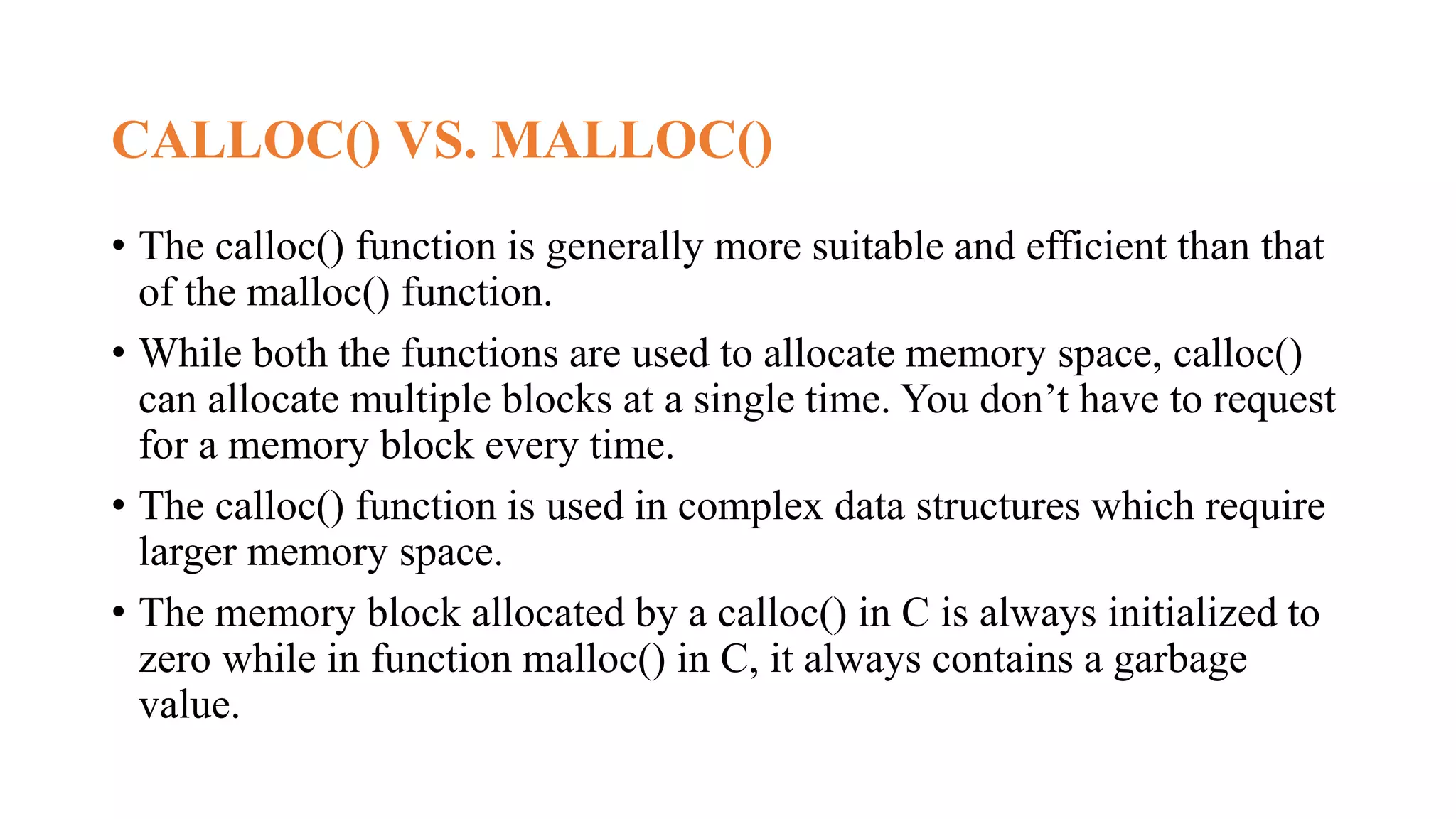Dynamic memory allocation in C allows programs to manually allocate and free memory as needed using pointers. The malloc() function allocates a block of memory of a specified size and returns a pointer to it. Calloc() allocates multiple blocks of memory and initializes them to zero. Realloc() changes the size of an existing allocated block. Free() deallocates a block of memory to avoid memory leaks.

